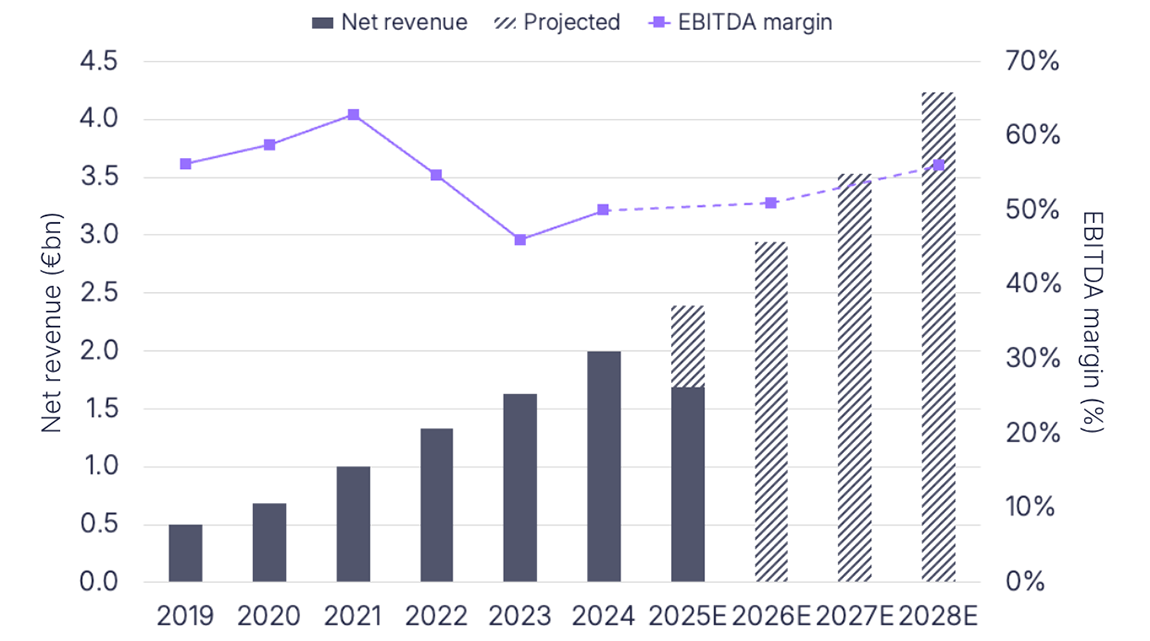Dutch payment processor Adyen has reported its results for H1 2023, in which it once again saw slower YoY revenue growth as well as a decline in profits, mainly due to the company’s commitment towards hiring and investing in new employees.
Revenues grew 21% to €739.1m, driven by growth in the company’s Unified Commerce system for businesses, but was offset by macroeconomic factors and a decline in digital volumes. The company’s EBITDA declined by 10% to €320m, on the back of the company hiring 551 more employees in the half – bringing its total to 3,883. As a result of declining profits, Adyen’s share price fell by over 40% in the wake of its results.
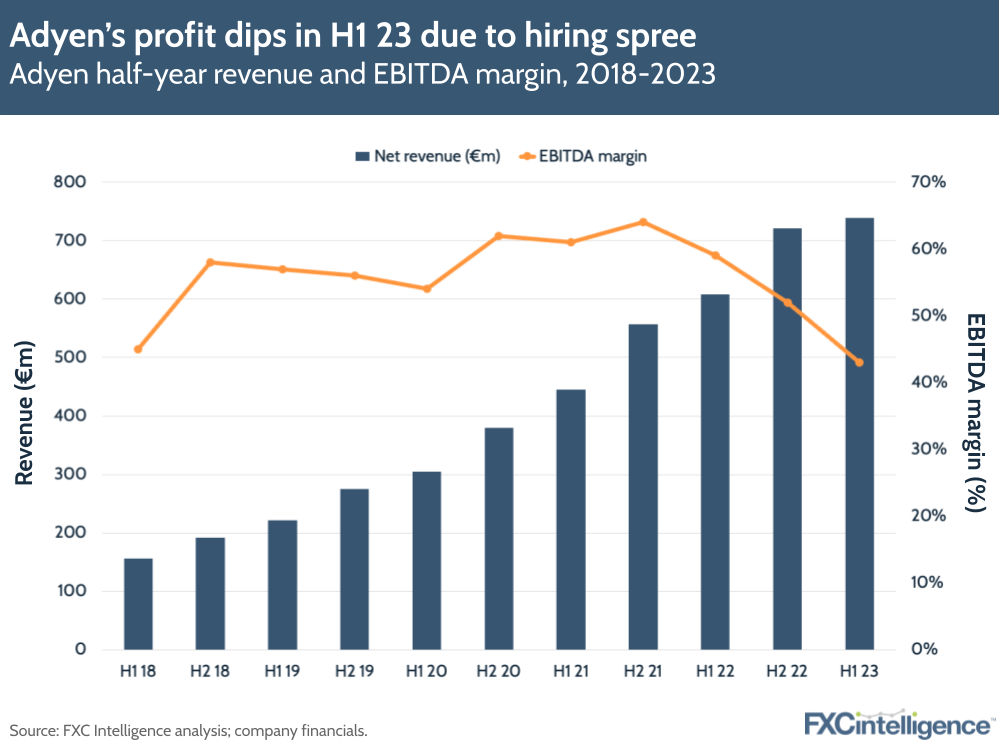
Why is Adyen continuing its hiring spree?
Of its new total full-time employee (FTE) figure, the vast majority have been hired in the EMEA region (Adyen’s core market, with 2,240 now in Amsterdam), though the company has also increased the number of FTEs in APAC, North America and Latin America. Around 75% of the new additions are tech roles, which the company says are there to power its global customer base amongst ‘young and more mature’ initiatives.
Continued investing in staff, however, has helped drive up operating expenses by 66% to €460m in the quarter, with wages and salaries up 83% to €247m, employee benefits up 80% to €285.9m, and sales and marketing expenses also up 13%. This resulted in the lower EBITDA – in turn bringing EBITDA margin down to 43%, compared to 59% last year.
Adyen believes it will see a return on investment and expects to continue its hiring pace until its team reaches the ‘next level of maturity’ in 2024. However, paired with other hits to revenue growth this half, the impact on profits in the short term is notable.
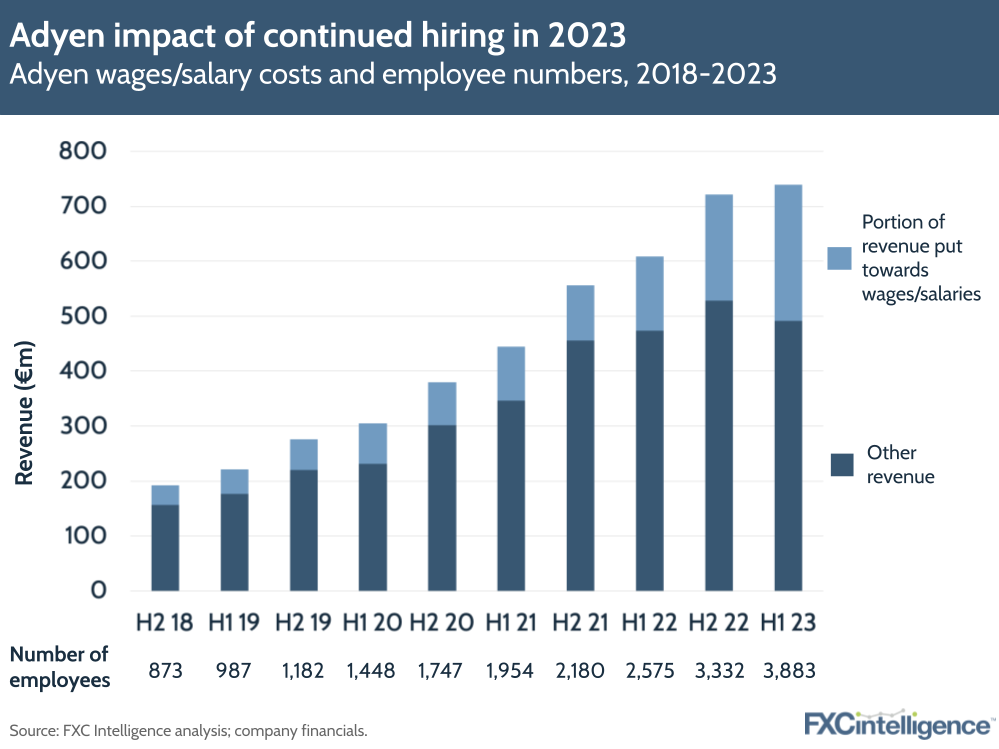
The impact of North American slowdown and digital volume declines
Adyen’s total processed volumes rose 23% YoY, with the company noting that more than 80% of growth was driven by customers already using the Adyen platform. The company reported a strong increase in its Platforms segment (excluding eBay, up 82% to €49.7bn) as well as 36% growth to €109.2bn in Unified Commerce, where the company has recently partnered with ecommerce giant Shopify.
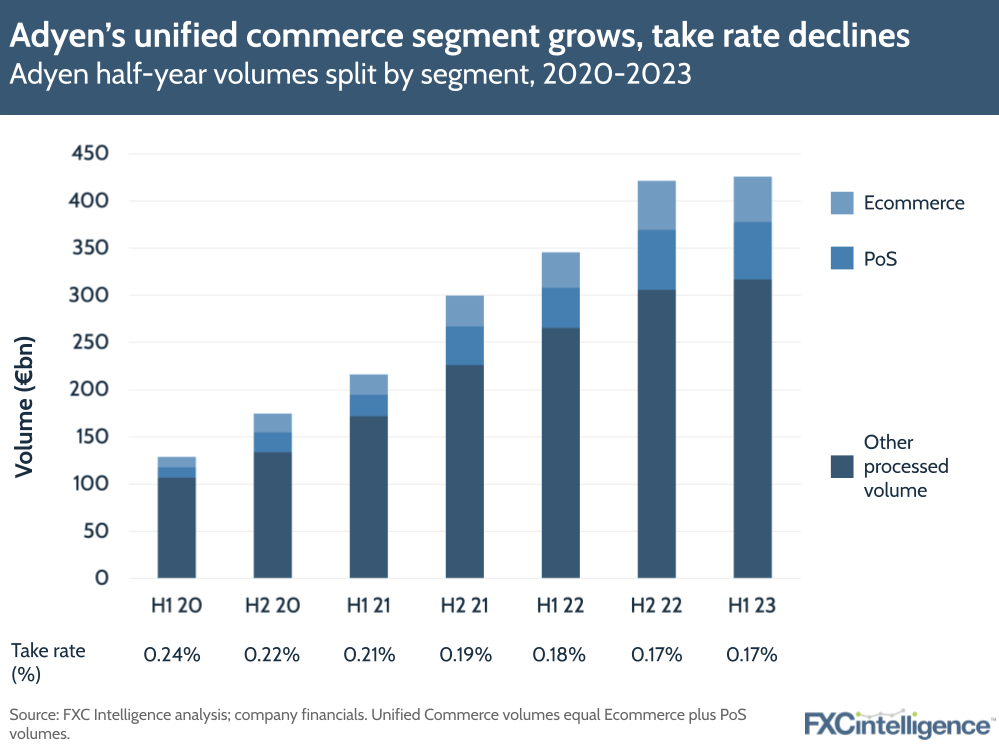
However, the company also noted that digital volumes grew at a much slower pace than expected in H1 23, up 23% YoY to €267.1bn (compared to 55% growth in H1 22). This was linked to a slowdown in North America, where the company has a large number of digital customers, and which saw net revenue growth of 23% to €187.5m in H1 23 (again, down from 52%).
According to Adyen, the declines in this region were due to a ‘shifting economic climate’, which was leading to American businesses focusing more on optimising costs, as well as higher competition in pricing in the region.
Net revenue contributions remained consistent YoY, with EMEA contributing 57%, followed by North America (25%), APAC (11%) and LatAm (7%). With regards to Adyen’s overall take rate, this declined slightly to 17.3 bps from 17.6 bps in H1 2022, which the company said was due to a change in its overall customer mix despite growth.
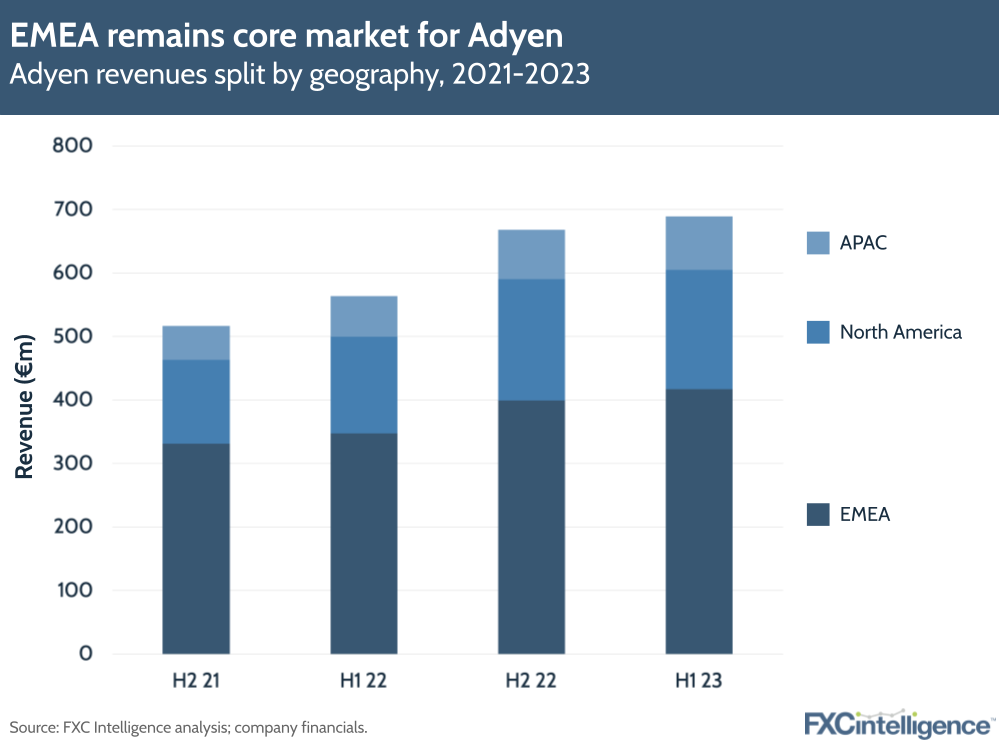
Next steps for Adyen
Adyen’s continued investment is being put towards new payments innovation; for example, new machine-learning products to help customers reduce payments fraud and linking with the US’s incoming FedNow instant payments rail in the US.
Similar to its previous call, Adyen said it aims to improve its EBITDA margin to levels above 65% in the long term. It also wants to achieve a CAGR between the mid-twenties and low-thirties in the medium term through its sales strategy, and a CAPEX of up to 5% of net revenues.
Adyen said in its shareholder letter that “investments in the team and revenue never move simultaneously. Rather, the former drives the latter over time”. Investors will be watching to see if this statement bears truth in the future.
How does Adyen compete with other payment processors worldwide?

